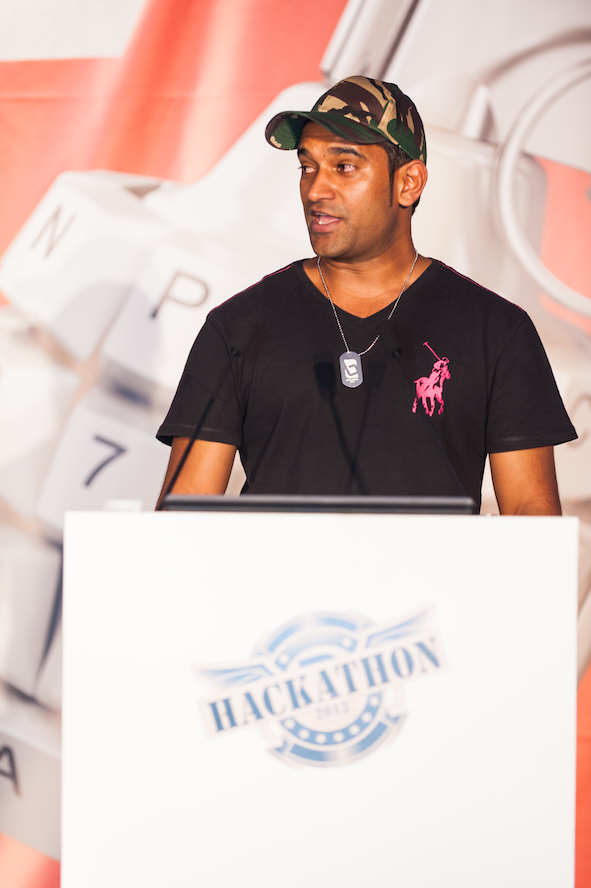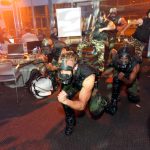When Britehouse contacted us a few months ago to say it was hosting a hackathon for its employees and that it would love for us to cover it we were strangely intrigued.
After all, why would a very suit-and-tie, enterprise-focused group of technology companies be hosting a hack fest?
Codefests (and similarly awesomely-named events) are aimed at getting a bunch of spikey-haired computer whizzes together in a room to solve some of the world’s most pressing problems with their l33t ninja hacking skills. They aren’t really the domain of business-focused tech firms.
Silicon Valley’s coolest suspects, maybe. But not organisations that mean business. Surely?
Most of the companies involved with the whole hackfest paradigm are mining their employee base for bright, new innovative ideas that could well lead to worthwhile revenue streams.
Admittedly, that was one of Britehouse’s goals with this hackathon. The more important goal however was for the employees from the group to begin thinking together with the same mindset, beginning to build a culture of collaboration across the Britehouse brands.
The group is on a mission to reorganise itself into a structure that allows it to better leverage the inherent strengths of the various companies it has in its ranks. It’s something that’s far easier said than done.
Big groups of companies that are built on acquisition, like Britehouse, don’t mesh together cohesively from day one. That cohesion and integration is always a work in progress.
The hackathon was therefore a great way for the companies to begin working together as – to use a horribly cliched cliche – ‘one Britehouse.’
As the Lord of the Rings’ Boromir would say in a massively overused Internet meme,“One does not simply hold a hackathon…”

Britehouse, under the guidance of its CTO, Rudy Gopaul started working on the hackathon about six months before it happened at the beginning of November.
Gopaul says he started out by researching and analysing some of the most successful hackathons that had been run throughout the world, identifying the common success factors in each.
The best ones, he says, allowed the participants some sense of self-determination as far as what they built during the hackathon.
They furthermore, did something a little whacky from a thematic perspective, like getting everyone together on an 18-hour plane trip or on a boat cruise.
Lastly, he says, they made it worthwhile for the participants to get involved.
Britehouse ticked those boxes one by one.
While each of the group company heads suggested solutions they would see value for in their individual companies, participants were offered the ability to build anything they wanted.
Secondly, Britehouse gave the event a military theme (complete with camouflage, cargo nets, music from some of the most iconic military-themed televisions series from the eighties) and hosting it offsite at a venue that was only disclosed on the morning of the event.
Lastly, it made the prize on offer for the winning team really, really attractive.
Not only would the winning team get bragging rights to being the most impressive and inspired outfit in the Britehouse ranks, but walk off with a contract that would see their idea funded, and them sharing 25% of the proceeds from the venture for a two year period.
That’s a serious prize. So it’s not surprising that the competition was so tough once the event kicked off.
In the 24 hours allotted to the hackathon, teams had to transform their ideas into a tangible business plan and using the remaining time, code as much of the solution as was possible.
Some teams built wireframes to show off. Others built proof of concepts. Others still built working demos of their ideas in action. Britehouse ensured that executives and other senior members of staff were on hand throughout the whole event, to mentor and advise the teams when they ran into an obstacle.
Once the ‘coding phase’ of the competition was over, each idea had to be pitched to a panel of investors – pretty much the Britehouse executive team – in a Dragon’s Den type environment.
Gopaul says that the group was astounded by the quality of what was put up in the judging session.
The winning team was a group of coders called ‘ACE’ that built an application to extend the functionality already available with an in-vehicle telemetry device that Britehouse already imports and makes available to its customers in South Africa.
ACE Team member, Veronica Smit, explains that the original application built to accompany the telemetry box, while perfectly functional, didn’t push the user experience envelope all that much.
“The current implementation of the hardware/software combination allows for certain triggers to be set – like a driver exceeding a speed limit, or traveling outside of a specific geofence zone – and for the application to alert users when these events occur.
“We wanted to extend this somewhat,” she says.
So her team built an Android and iPhone application that interfaces with the box, makes the user experience more pleasurable and adds to the functionality available today.
One idea ACE followed through was to allow for information collected by the device to be published to insurance companies’ databases, thus allowing individuals to have their monthly premium depend on their behaviour on the road.
Another was the ability to the hardware software/combination to monitor a driver’s behaviour and then provide tips they could employ to be safer on the road, or improve the economy of their journey.
This part of the solution would also contain a trip planning element, which would allow drivers to plot a route from one point to another and gain a sense of any obstacles or road hazards they might encounter on the way.
Yet another idea was for drivers to be provided with the ability to log each trip they take, distinguish between business and personal mileage and generate a report containing that information for tax return purposes.
Apart from the obvious revenue streams that would be derived from the combination of hardware and software sales (ACE’s software would make the whole solution a much more attractive one for consumers), Smit says her team was also looking at ways for advertisers to promote their brands and services inside the route planning part of the solution – alerting users to specials on fuel, refreshments and the likes along the route their journey took from one point to another.
ACE may have been the overall winners on the day, but the judges liked four other projects so much, they embarked decide to come to the same funding arrangement with them as they did with the winners. Each of those teams will receive 25% of the first two years’ proceeds from their projects.
The solutions put up from those teams were from vastly different market areas, allowing Britehouse to spread its risk. And one solution in particular – a corporate social investment mapping platform – has been pre-rodered by Microsoft South Africa.
So was the event a success?
Judging by the smiles on the faces of the attendees who seemed to be having a ton of fun and the smiles on the faces of the group company executives who got their hands on a whole new line-up of business ideas and solutions to market issues, the answer to that question is a resounding yes.
It’s a rare thing when both the employees and the senior management of a company are enthused by the same thing.
If I was Britehouse, I’d worry a little less about that challenging integration process I was talking about earlier. From my point of view they seem further along that road than they give themselves credit for.













